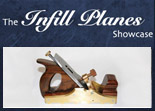Timbers Used For Pattern Making
When it comes to making the patterns used for castings, there are some fundamental attributes that need to be considered. Woods chosen for this purpose should be straight, and evenly grained, sufficiently dry and most importantly, dimensionally stable – with only a small amount of movement in service. Other requirements are that the timber should be easy enough to work and shape, and that it glues readily.
There are generally no complicated woodworking joints in patternmaking as most pieces are simply butt jointed, with white or yellow P.V.A. glue. Traditional woods used in patternmaking are yellow pine, ( Pinus strobus ) also known as white pine, Brazilian or Honduras mahogany (Swietenia mahogani and Swietenia macrophylla respectively ), cherry ( Prunus avium ) maple ( Acer campestre ), and birch ( Betula alba ). Yellow pine was often the preferred timber for pattern making, unless several castings had to be made from the same pattern, in which the stronger and more durable mahoganies excelled. Mahogany was also chosen over yellow pine for patterns that required fine detail, as its strength was not as compromised in thinner sections.
More recently it’s been common practice to use jelutong ( Dyera costulata ) as a patternmaking timber. This is largely due to the increasing costs of yellow pine. jelutong works perfectly fine and is available in reasonably large sections.
It is also a good idea to protect the pattern with paint or varnish. This helps to inhibit the absorption of moisture from the damp molding sand or even the atmosphere itself. This is especially important for patterns intended for repeated use.






